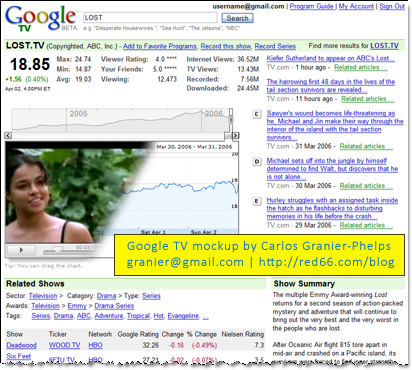How to Get 22GB of Free Storage Space on Dropbox
Follow these five easy steps to max out your free Dropbox account with over 22GB of free storage space.
Follow these five easy steps to max out your free Dropbox account with over 22GB of free storage space.

In April, 2006, I wrote: “Google is also making inroads into the set-top box business, hoping to bring television media straight into your television (whether it’s in your living room or your mobile phone).” Today, Google is finally announcing Google TV.
Media executives thinking about distributing their content online (and they all should) need to make important mindset shifts in order to understand what the digital revolution is all about, how it affects their business and what benefits it can bring to their operation.
I’ve outlined five mindset shifts every media executive needs to make.
In an age of constant innovation, it’s important to identify behaviors within your company that may hinder its chances of success. Do you belong to a learning organization? Is anyone keeping up with innovations? Are employees encouraged to do so? When an employee comes up with a new idea, does that idea make it through…
Several traditional media organizations are using Twitter to distribute breaking news and alerts in a timely manner. Many media employees are also using Twitter to inform their followers of news as they happen, before they get back to the newsroom. I’ve tried to condense a list of traditional media organizations using Twitter, with links to…
Following Technosailor‘s lead, and using his code, I’ve setup the MiamiTwits Twitter group for people in the Miami, FL area (and anyone else, really) who wish to subscribe. All you need is: a twitter account (of course) follow @MiamiTwits send a direct message to the group (e.g., d MiamiTwits Hello Miami!) and it will be…
I wrote this as the introduction to a report I presented a year ago, after attending the Forbes MEET conference, and was surprised at how relevant it still was… so I decided to share it with my blog readers. 1. Universal access to media distribution. The traditional media outlets were used to managing an industry…
About eight years ago, I was analyzing television ratings at a leading network in Venezuela… when I came up with the following graph (see below). Rendering took forever in Excel, but the resulting image was not only beautiful, but highly informative. Have a look.
As an advertiser, you’d want to optimize your purchases. But by the time you can tell a video is a runaway hit, you’ve not only probably lost the majority of your potential audience, but you’ll also have to pay a premium to advertise on that now world famous video.